Every Drop Counts
Milwaukee’s sewerage district is leading an incremental revolution, to manage every drop of rain where it falls.
Last February, the Milwaukee Metropolitan Sewerage District (MMSD) won the Water Resources Utility of the Future Award from the National Association of Clean Water Agencies. According to NACWA, the award is “given to member agencies that demonstrate bold, transformational leadership in managing resources, partner effectively in local economic development, and engage stakeholders—resulting in environmental, economic and social benefits.”
The District was given the award for its “Vision 2035” plan, adopted in its current form in 2010. Two provisions that NACWA found worth noting were MMSD’s shift to watershed-based management and triple bottom-line accounting.
Six watersheds fall inside of MMSD’s 411-square-mile permitting area: the Lake Michigan basin, the Menomonee, Milwaukee and Kinnickinnic Rivers and their tributaries, the Root River and Oak Creek. Watershed-based management shifts the management of water resources from a gray infrastructure model: channeling water quickly and efficiently to a central location, treating it, and returning it to its source, to a green infrastructure model in which water is managed where it lands. Those efforts are well underway with MMSD’s Greenseams and Freshcoast 740 Plans and that mission also allows the District to support the efforts of others to improve the watershed. In 2011, MMSD received a $100,000 grant from the federal Environmental Protection Agency (EPA) to develop a watershed permitting framework. Tom Grisa, Brookfield’s Public Works Director, says that a number of communities in these watersheds already had a group permit, but when the opportunity from the EPA came along, MMSD offered to help. Their approach, says Grisa, was “even though we’re not covered by this permit, were going to put in an application on your behalf.”
Though the group permit had already brought those communities together, the new watershed permit enabled them to share costs on larger projects that would benefit the watershed, which means individual municipalities now get credit for work even though it’s not wholly within their political boundaries.
Collaborating to this extent, Shafer explains, is made possible by the District’s decision in 2002 to shift to a triple bottom line accounting system that takes into account social, environmental and financial costs—sometimes called the three Ps, for people, plant, profit. This approach was conceived by John Elkington, a leader in the corporate responsibility movement, as a way to measure sustainability by evaluating all three of those factors to determine not just immediate, but long term costs. As a framework, it’s sometimes criticized because it compares apples to oranges to bananas, but according to the Indiana Business review, it “can be an important tool to support sustainability goals.”
MMSD adopted this accounting system in 2002, says Shafer, because they were “seeing poor water quality that wasn’t from our feeder system.” Even with a vastly improved gray infrastructure, there were still high level of bacteria and pollution that were coming from non-point source pollution—runoff in cities and rural areas that may include lawn or agricultural fertilizers and pesticides, oil leakage from cars, bird and dog feces, which now accounts for about 90 percent of all river and lake pollution in the MMSD region. (Non-point pollution has become the major problem since the Deep Tunnel ended most sewage overflows into the lake.) “They [the DNR] wanted us to start treating storm water outfalls,” Shafer explains. “That cost would have been too great.” Far better than building more expensive and high-maintenance tunnels and pipes was an approach allowing the water to be absorbed where it landed, and partnering with other entities and pooling resources for solutions. Poblocki Paving is a perfect example, as is MMSD’s April Green Luminary and Milwaukee’s Maryland Avenue Montessori School.
Watershed based management and accounting enabled MMSD to provide financial support for the Maryland Avenue School to build a rainwater catchment system in place of a parking lot. The school leveraged the support to drum up funding for a 14,000 square foot rain garden complete with a dry riverbed and pond. Native plantings help the packed clay soil absorb water, and a new entrance to the school includes more green space and plantings and the entire project is incorporated into the classroom curriculum. According to the project organizer and Maryland Avenue parent Angeline Koch, the combined projects, which began because of MMSD’s support, divert about 80,000 gallons of water a year from the city’s combined sewer system.
That’s a teacup of water compared to the more than 500 million gallons captured by the Deep Tunnel, but, as Howard Neukrug, Philadelphia’s Water Commissioner explains, the transition from failing gray infrastructure to a sustainable green infrastructure is “an evolution of a city. Not a revolution.”
In Pat Marchese’s description of the phases in MMSD’s history, this fourth one is characterized by the transition to sustainability. Shafer’s genius, Marchese claims, is that he’s managed to convince everyone that “small is beautiful and every drop counts.”
While many city and municipal leaders might find it surprising that MMSD asks to have stipulations included in their permit, Shafer explains that they’re just asking for credit for what they’re already doing. “Flood management wasn’t in the permit. We’re doing the work because it makes sense to keep floods out of people’s basements. We wanted to count the Greenseams project because we were already doing it.” Because of those kinds of additions, MMSD’s 2014 wastewater permit is the first in the nation that requires green infrastructure.
While that’s a triumph for sustainability, there’s still an awful lot of gray infrastructure and it still has a job to do. Cheryl Nenn of the Milwaukee Riverkeeper, who points out that her organization’s job is to push MMSD, admits to some skepticism about green infrastructure projects. “They’re pretty to look at and easier to see than a pipe underground. But I still think he needs to be careful because he’s in charge of the sewers.”
In 2013, the City of Milwaukee’s Office of Environmental Sustainability released its ReFresh Milwaukee 2013-2023 Sustainability Plan. The clean water goals of ReFresh Milwaukee are meant to nest within the district-wide goals that MMSD outlined in the Vision 2035 plan. By 2035, MMSD wants to capture the first half-inch of rainfall landing on all impervious surfaces in the area. The first step was to establish a Green Infrastructure Baseline Inventory. That report, released in April of this year, calculated that about 45 percent of the city’s 96 square miles are covered by impervious surfaces. Capturing half an inch of rainfall from just those surfaces “would require the collection of approximately 380 million gallons of stormwater runoff,” — more than two-thirds of the entire capacity of the Deep Tunnel. Alternately, the city could meet the requirement of the Vision 2035 plan by prorating according to the size of the city’s area. Milwaukee only holds 23.4 percent of the District’s service area. The city’s portion of the total 740 million gallons, then, is 23.4 percent—or 173 million gallons.
Either way, MMSD’s goals far exceed those the city is on track to achieve. Currently the city is only capturing about 14 million gallons of storm water. The city’s goal of increasing green infrastructure by 10 percent annually would enable the city to capture an additional 19.5 gallons for a total of 33.5 million gallons by the city’s 2023 deadline.
“Both entities recognize the huge discrepancy between the two numbers,” says Milwaukee Commissioner of Public Works Ghassan Korban. MMSD is “in the process of assigning a realistic number to each municipality.” From here, the city and the district will start to work together to see if the goals they’ve set are attainable and then agree on a goal. “That’s how you start,” says Korban. “You raise the bar. You set high expectations and you get everybody to collaborate and try to achieve the goal.”
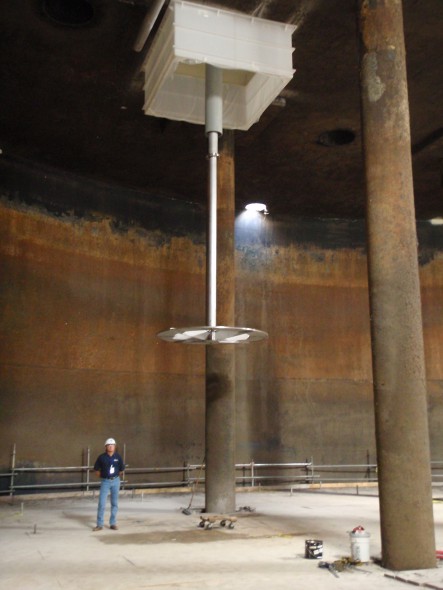
Inside one of MMSD’s anaerobic digesters which convert waste into methane gas. Photo courtesy of MMSD.
While the city and the municipalities and neighborhood organizations are willing and even eager collaborators, not everyone with whom MMSD works is focused on the same goals. Last fall the District had a dust-up with We Energies that prompted Shafer to write an op ed in the Milwaukee Journal Sentinel. We Energies had filed a claim with the Public Service Commission to change its rate structure—the way that it charges for energy. The request was in response to the impact that renewable energy is having on We Energies bottom line. The more renewable energy people use, the less income We Energies gets. MMSD’s goals of using 100 percent renewable energy by 2035 presents a problem for a utility whose rate structure works more profitably with non-renewable energy.
The change We Energies was requesting would have increased MMSD’s bill by a million dollars that the District would have been forced to recoup from its ratepayers. MMSD already generates 65 percent of its energy needs from internal sources, Shafer wrote. “Over the longer term, if MMSD no longer needs We Energies, its income will be reduced $4 million to $6 million a year.” Part of the 2035 Vision is for the District to use 100 percent renewable energy, 80 percent of which would come from internal sources, but that program experienced a setback last year when Emerald Park in Muskego, which pipes its landfill gas to MMSD via a 19-mile long pipeline, failed to deliver the amount it contracted for and forced MMSD to purchase more costly natural gas to cover the difference. Landfill operator Advanced Disposal is obligated to compensate the District for the cost of the gas that it doesn’t produce, but the ongoing difficulties with the landfill project raise questions about its long-term viability.
Another, even more unpredictable challenge is how climate change is going to impact the District’s ability to manage floods. Dave Fowler, MMSD’s Senior Project Manager and a Certified Flood Manager, explains that flood management “used to be levies, conveyance and basically fighting the flood.” That’s how the Kinnickinnic and Menomonee rivers ended up with concrete liners underneath the streams. During flood, those lined channels carried the water away quickly, but their capacity has already been outgrown. “Now we’re trying to live with the floods,” says Fowler. “Let the river have its space.”
Flood management plans are all modeled on what the industry calls a 100-year flood area, meaning that there’s a 1 percent probability of the highest level of flooding given the current record, but the “current” estimates haven’t been updated since the late 1970s. As more and more 100-year storms are happening, some in the industry wonder if the premises behind the modeling need to be revised.
The discussion around those laterals sounds much like the earlier discussions about whether or not to separate the combined sewers: The best solution to the problem is probably one that we can’t afford. The inflow and infiltration problem are going to be huge, says Shafer. To fix them, he says: “I still firmly believe we’ve got to have a sustainable funding source.”
MMSD’s 2015 Capital Budget is $215 million and its Operating Budget is $89 million. The majority of MMSD’s income comes from the district’s ratepayers—as it did in 1914 when the newly formed Milwaukee Sewerage Commission wouldn’t submit a budget to the city because they didn’t didn’t know what the sewer system was going to cost. Now, as then, those who are responsible for the quality of the region’s water have to convince their ratepayers to think differently about it. The “new normal” for MMSD, Shafer writes in his budget introduction, includes “building green infrastructure in lieu of building sewers,” as well as “creating financial partnerships with the municipalities we serve.” Funding and building a giant tunnel and a water treatment plant is a fundamentally different skill than convincing 1.1 million people to disconnect their downspouts, stop flushing medicines down the toilet, repair leaky pipes, and plant gardens in their yards and on their roofs. Back in Philadelphia, Neukrug notes that the industry is transition from “dealing with pipe to dealing with land and politics — and it’s very different.” Yet, just as it’s done for the last century, MMSD is leading the way, showing everyone how that transition is made.
The MMSD Story
-
From Gray to Green
 May 21st, 2015 by Susan Nusser
May 21st, 2015 by Susan Nusser
-
How The Sewerage District Came of Age
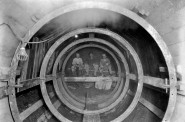 May 13th, 2015 by Susan Nusser
May 13th, 2015 by Susan Nusser

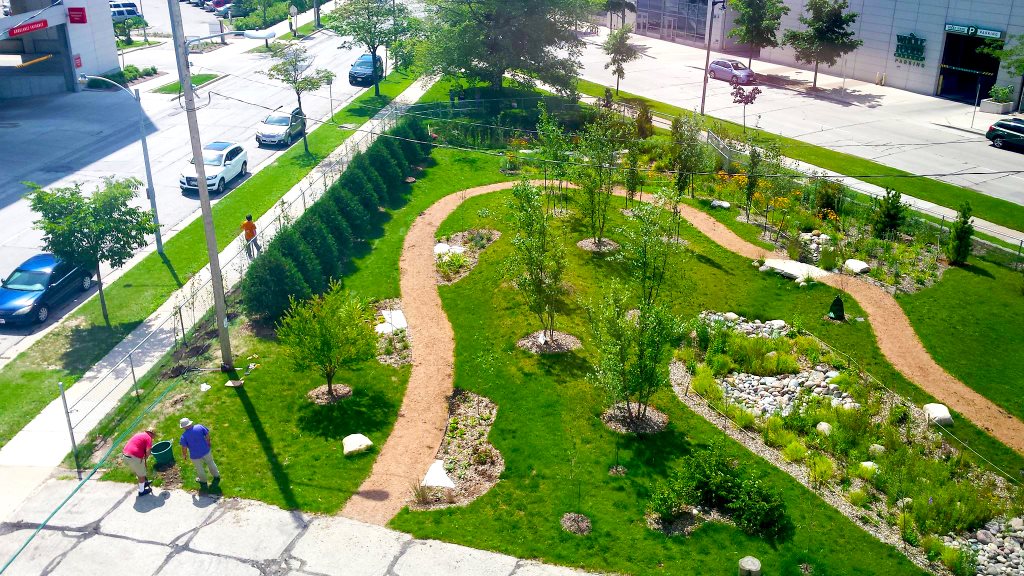
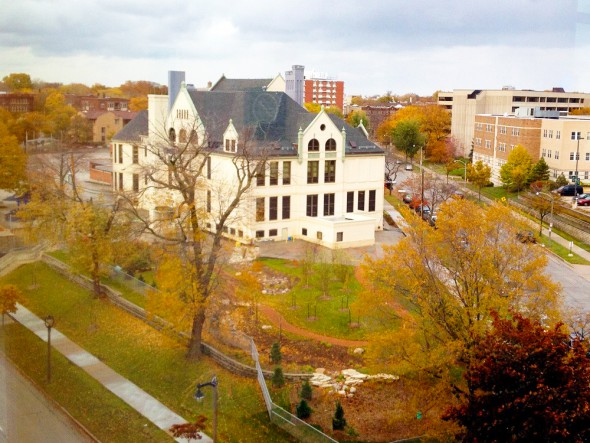



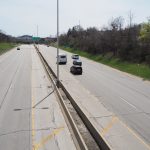











“Last February, the Milwaukee Metropolitan Sewerage District (MMSD) won the Water Resources Utility of the Future Award from the National Association of Clean Water Agencies. According to NACWA, the award is “given to member agencies that demonstrate bold, transformational leadership in managing resources, partner effectively in local economic development, and engage stakeholders—resulting in environmental, economic and social benefits.”
Don’t anyone tell Charlie Sykes!